
A Beginners Guide to Modifying A Car
This blog post is from APTuned.com from 2011 but we when read this we felt it had lots of great information about deciding how best to mod your vehicle. Full credit to APTuned here and keep in mind the references are to that author. If you'd like to talk to a local mod expert then give us a call and we'd be happy to talk about your mod wish list. Enjoy!
Dale Adams Automotive.
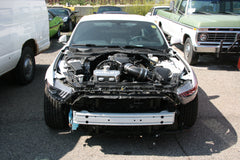 It's easy for a seasoned car guy to give advice on what he or she thinks is best when it comes to modifying your car or truck, but many times that advice is biased based on their own belief of what is best and based on what they read on their forum. What a beginner needs is advice that comes from the basics of automotive performance and what makes or doesn't make power. It's hard not to get tied up in manufacture claims, so we're going to create this guide on what every beginner should know when it comes to modifying their car for the first time, or even picking a platform to modify.
It's easy for a seasoned car guy to give advice on what he or she thinks is best when it comes to modifying your car or truck, but many times that advice is biased based on their own belief of what is best and based on what they read on their forum. What a beginner needs is advice that comes from the basics of automotive performance and what makes or doesn't make power. It's hard not to get tied up in manufacture claims, so we're going to create this guide on what every beginner should know when it comes to modifying their car for the first time, or even picking a platform to modify.
Back in the day, street rods were built based on bigger is better. Today, with technology being at the forefront of automotive performance, bigger isn't necessarily better. Today it's about creating power from a lean and mean engine in addition to a lightweight chassis that both work with well together.
Why it's important to plan your mods
Many of our customers, and myself included, like to buy parts on a feel good basis. We want that intake or want that exhaust because we want the car to sound good, and make more power. But then we find later that we decide to go a different route, and then all of a sudden the exhaust is too small or too big, and the intake won't work any more. At that point we've learned that we wasted money and should have come up with a plan first on what goals we have for the vehicle. Do we want a car for drag racing? AutoX? Road Racing? Street Performance? Every setup would be different here, so planning that out would help you to not only save money, but ensure the parts you purchase work well together and compliment each other.
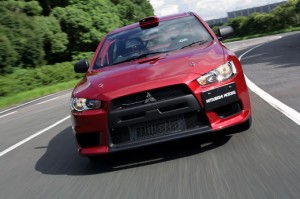
Select your platform
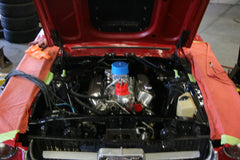 If you don't already have a car or truck to modify, then you need to decide first which platform you are going to go for before you come up with a path. Again, this comes down to deciding what type of racing or performance you want from your car. Many of us already know that we want an import or domestic, and a specific brand. Others are limited by budget or other criteria. For flat out power, nothing beat starting with a platform that is already turbo from the factory, or already has a V8 motor. Some examples of great platforms to start your mods:
If you don't already have a car or truck to modify, then you need to decide first which platform you are going to go for before you come up with a path. Again, this comes down to deciding what type of racing or performance you want from your car. Many of us already know that we want an import or domestic, and a specific brand. Others are limited by budget or other criteria. For flat out power, nothing beat starting with a platform that is already turbo from the factory, or already has a V8 motor. Some examples of great platforms to start your mods:
- Subaru WRX or Subaru WRX STi
- Mitsubishi Lancer EVO (all generations)
- Mitsubishi Eclipse Turbo (FWD or AWD) and Eagle Talon or Plymouth Laser
- Mazdaspeed3
- Ford Mustang
- Chevy Camaro
- Corvette (C5 Z06 is extremely affordable right now)
- Dodge Charger or Challenger
- Nissan 350Z or Nissan 370Z
- Nissan 240SX (great drifting platform)
- Honda Civic / Acura Integra (Great platform for anything other than drfiting)
- Toyota Supra Turbo (can be had for a good price now)
- ... and more
The above list is just an example of good platforms on a budget. Sure you can go the more expensive route and go straight for a Nissan GT-R, but the majority of people won't go that route, and so we won't explore that platform in specific. Our goal here is to give you general advice that you can use on any platform.
Drag Racing
So, you decided that drag racing is for you? Welcome to a highly competitive world primarily dominated by high horsepower. The goal of drag racing is to get your car down 1320 feet as quickly as possible. This means your car needs to be as light as possible, launch as hard as possible, and have as much useable power as possible. Typically, drag race setups are not very comfortable on the street. If you have a front wheel drive, you will need a good set of slicks and a limited slip differential. You can't drive around with slicks on the street (typically), so you will need a special setup of wheels and tires for the track. If your car is rear wheel drive, you can get away with using street slicks, but for serious drag racers, this might not work. You'd want to setup your suspension to keep the rear stiffer than the front, so as the weight transfers to the back for launch it helps with traction. Brakes aren't too important except you want to be able to stop at the end of the drag strip.
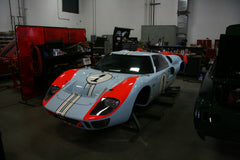 Road Racing
Road Racing
Unlike with drag racing, road racing not only requires power, but requires all around incredible handling and braking. Where as drag racing requires only 10-13 seconds of racing at a time, road racing could be for 30+ minutes of constant abuse. Cars that are lightweight and handle/brake well could have faster lap times than cars making twice the power, so it's really a game of balance. For competitive use, you'd need to get a set of road racing tires and a set of wheels to go with it, as tires are extremely important. Once the brakes and suspension are ready to go, you'd want power to match. The key here is balance, you don't want a car that has more power than the chassis can handle, more power than the brakes can handle, or more brakes than power. Start road racing with a bone stock car, then add race tires the next time you are out, and then start to modify your car. You'll appreciate your car much more when starting road racing with a stock vehicle.
AutoX
Autocross or AutoX really wears out your tires from parking lot racing. You'd want a car that is nimble, has good torque, and a usable power band as most of the time your speeds will be under 60 mph. This type of racing is usually around 1-2 minutes at a time. Most important here would be your tires and your suspension setup. Tires are an interesting aspect here because with 1-2 minutes of racing they don't really get much of a chance to warm up. So you would need to get tires that are able to handle well on gravel and heat up quickly. A typical road racing or street suspension should be plenty for a fun AutoX day.
Safety
Safety is extremely important, and you would need a fire extinguisher, and possibly a roll cage depending on the performance of your car, and the type of racing you choose. You would also need a helmet and possibly a 4 or 5 point safety harness. You also need to make sure you have great brakes... it's often overlooked. Many cars brake well with just upgraded rotors and pads, others need a whole new big brake kit.
Planning your modifications
Now that you know the general idea of what you need for each type of racing, you need to decide what route you are going to take with modifying your car. Below we will touch on the basics of some of the major areas of modification and you can decide which is right for you, and which is within your budget. Not all of these modifications need to be done at once, but some will require a mod or two before you go to the next step, so plan that out too.
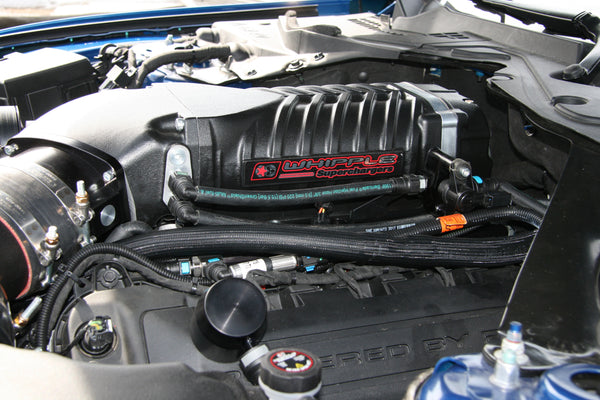
Intake System
Ok, so one of the basics would be the intake system. If your car is not turbo but you are going to add a turbo to it later, skip the intake. When you get a turbo, the intake system is completely redone, so the old intake you had won't work with the new system any more. Also, if you go with a turbo kit, most of the kits come with an intake kit for it.
Should I get a drop in air filter?
If you are never going to modify your car past an air filter, then sure. An air filter such as a K&N is a good way for an extra 1-2 horsepower and it's an air filter that you won't have to replace again for a lifetime, but it's not going to give you nearly as much power as a short ram or cold air intake.
Short Ram Intake vs Cold Air Intake - What's the difference?
This is a big question we get asked a lot. A short ram intake has a shorter intake tube, and typically has the air filter in plain sight under the hood. For some applications this is fine, but for others this isn't as efficient as a cold air intake, because a cold air intake actually has a longer air tube that literally relocates the air filter away from the engine as far as possible, sometimes into the fender, to draw in cooler air. Short Ram intakes have been known to not create as much power since they take in so much of the engine's heat. Short ram intakes are less expensive, and also depending on the car or truck, they might find that a short ram intake with an air box works just as well or better than a cold air so only a short ram might be available. If both are available we always recommend the cold air intake. Since the cold air intake is usually far from the engine, it can be low to the ground. This causes the air filter to sometimes suck in water if you run over puddles or live in a area that rains a lot. Due to this many cold air intakes have an available air bypass valve that solves this problem.
Exhaust System
The louder the exhaust the more power it makes, right? Wrong. Just because an exhaust is loud doesn't mean that car is making more power than a similar car with a quieter exhaust. The design of exhaust systems now a days has quality mufflers that are straight through (meaning the exhaust has a single unrestricted exit path), but have technology built in that also quiets the sound at the same time.
A big exhaust causes backpressure loss and you lose power
Wrong. This is a myth. If you look at a dyno of a car such as an Acura Integra GSR that has a 3" exhaust and a naturally aspirated motor, you will see that the car didn't lose power, but what happened was it "feels" like it lost power due to the power band shifting up. However, no one wants an exhaust that makes more power but doesn't feel like it. Seat of the pants is a big factor in street performance. We recommend for you to get an exhaust based on the future goals of the car. If you have a non turbo car, and are going to make it turbo, 3" exhaust is the way to go. If you are going to stay all motor, a 2.5" would be ideal. For turbo or high power V8s we always recommend a 3" exhaust or even more in some cases.
Catalytic Converter vs Test Pipe or Cat Delete
It's true that removing the catalytic converter from the exhaust increases power quite a bit. However, we recommend this only for off road cars because not only is it against smog laws it's just not good for air quality. We've found that a good high flow catalytic converter does a great job with only a slight power loss over a straight pipe. Make sure your high flow catalytic converter matches the same size as your catback exhaust for straight exhaust flow.
Turbo Kits
If your car didn't come with a turbo from the factory, then we recommend no modifications at all until you have your turbo kit. Once you have the kit, put it on, get it tuned, and enjoy the car for a bit. Plan out then what exhaust system you want. At that time, when you get your exhaust, you can also get the boost turned up, and re-tuned. We find that customers who do it all at once end up getting used to the power too soon, and wanting more. This two step process gives you the ability to feel your car at a higher power level, and also to know that you can be turbo with a stock exhaust and the car can make more power yet be quiet at the same time. Sure it's a big bottle neck, but we've actually had customers who preferred this setup. It's great for a daily driver under the radar. Sometimes a stock exhaust with a high flow catalytic converter and muffler do the trick.
Cars with a stock turbo
If your car came with a turbo stock, you have it made. Your upgrade path is easy - cold air intake, high flow turboback exhaust (downpipe, high flow cat, catback), boost controller and tuning. Most exhausts are already 3" upgrades, so when you decide later that you want a bigger turbo, your exhaust system is already set and ready to go.
Cars with larger engines - V6 or V8
Depending on if you want all motor power, or forced induction, you are going to be able to benefit from a bigger exhaust. Moreso on the V8, we recommend at least a 2.5 or 3" exhaust, long tube headers (if they are smog legal in your area), and high flow cats. The goal is to let your engine breathe. If you are going to use nitrous, make sure you figure the max nitrous shot your engine can take, and scale it back by 50-75 shot. For example, if you have a LS1, you can usually run a 150 shot and be fine, but to be on the safe side, run a 75 or 100 shot. We recommend wet nitrous kits vs a dry nitrous kit.
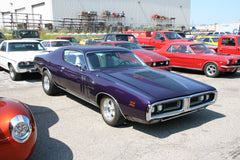 What is the difference between wet nitrous kit and dry nitrous kit?
What is the difference between wet nitrous kit and dry nitrous kit?
A wet nitrous kit injects both nitrous and fuel into your intake together. A dry nitrous kit only injects nitrous. We believe that for most applications, you are safer to run a wet shot to ensure you have enough fuel for your engine. If you run a dry shot, you need to be sure that when the nitrous is activated your fuel system will have enough capacity to add enough fuel to compensate. As long as you have the fuel, and you run the nitrous shot within the limits of your engine, you should be able to run nitrous for hundreds of passes reliably. Nitrous of course would only be used for bursts of speed such as drag racing.
Tuning
I can't stress how important it is to have your car tuned. If you want reliable power and don't want to worry about your engine every time you are full throttle, make sure you take your car to a reputable tuner. They will ensure your fuel trims, timing and everything is set in line and well within safe spec.
Suspension
Ah, the all important stance. Nothing is more important for many people, and we agree, the car has to not only look good, but have the suspension prowess to boot. There is everything available from lowering springs to coilover kits, and what you choose depends on your budget and end goal. Typically, lowering springs are made to lower your car, give you a good ride, and the trade off is that they don't handle as good as a coilover system. If you pair your lowering springs with a good shock, you can have a good handling car, better than stock, but not for competition use. We'd recommend lowering springs more for looks than performance. For more performance, look at a coilover kit. These kits come with both shocks and the coilover springs as a unit (there are exceptions, but full coilover kits come with shocks). These are the best setup for handling and one of the best features is that they are adjustable. You can raise or lower the car depending on how you want it to sit. The price point is higher, but if you consider that with lowering springs, you typically need to buy shocks as well, you will see the price for the coilover kit wins out, especially since many of the better coilover kits also come with built in camber kits.
Do I need a camber kit?
If you are going to lower your car more than an inch, we recommend a camber kit. Without a camber kit, the amount of handling you gain can be negated by the handling you lose from too much negative camber. Not to mention the negative camber really wears on your tires. You want the camber kit to give you as much tire contact patch as possible, and it's highly worth it.
Do I need upgraded shocks with my lowering springs?
Depends. If your car is new, you can get away with just using lowering springs. If your car is older, this means your shocks are older, and the lowered stance of the lowering springs, plus the added spring rate usually blows the stock shock within a few weeks or few months.
What about coilovers that don't come with shocks?
You have to be careful with these. We highly recommend to buy performance shocks to go with these. A popular choice is Ground Control coilovers with Koni Shocks. However, this combination is pretty pricey, and many customers end up going the route of a full coilover kit.
Full Coilover Kit
A full coilover kit comes from the factory with not only the manufactures recommended spring rate for your car, but also with shocks that can handle being lowered, and handle the added spring rate. This is very important for you to have a balanced suspension right from the start. You can use sleeve type coilovers (ones that don't come with shocks), but you would need to pair them with the right shocks to ensure your suspension works well together. Plus, many full coilover kits come with upper pillowball mounts that allow you to adjust camber. Really a great way to enhance your suspension.
Wheels and Tires
 Want dubs? The bigger the wheels the less performance gain typically. The goal is less rotating mass, so you want smaller and lighter wheels than stock. Sometimes you can't go too small because you might have a big brake kit and need wheels large enough to clear. This is a huge topic, but go with the lightest wheels, and only go for the bigger size if you'd rather have looks over performance. Depending on the vehicle, the tradeoff could be minimal. For example, 20" rims would work on a 2011 Ford Mustang GT, but not so much on a 1995 Civic. Do what makes sense for your vehicle.
Want dubs? The bigger the wheels the less performance gain typically. The goal is less rotating mass, so you want smaller and lighter wheels than stock. Sometimes you can't go too small because you might have a big brake kit and need wheels large enough to clear. This is a huge topic, but go with the lightest wheels, and only go for the bigger size if you'd rather have looks over performance. Depending on the vehicle, the tradeoff could be minimal. For example, 20" rims would work on a 2011 Ford Mustang GT, but not so much on a 1995 Civic. Do what makes sense for your vehicle.
In conclusion
There is so much to modifying a car that it's hard to include everything in a single article. However, we wanted to touch on the biggest and most important aspects so you can get an idea on what it takes to modify a car the right way for those of you who are beginners. Modifying cars is fun, and very rewarding, and it doesn't have to be rocket science to get the right setup.
If you have general questions, post them below, but this guide should give you a better understanding of the world of modifying, types of racing available, and where you fit in. Once you start, you will have more detailed questions on each topic, and we'll try to address them in future articles.
Happy motoring!

Dale Adams
Author